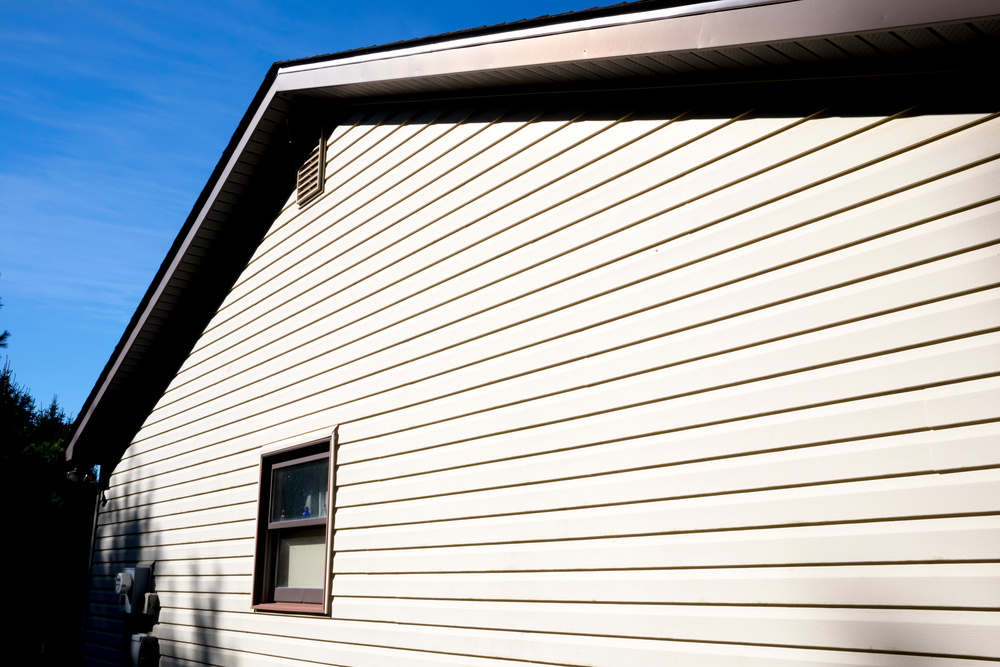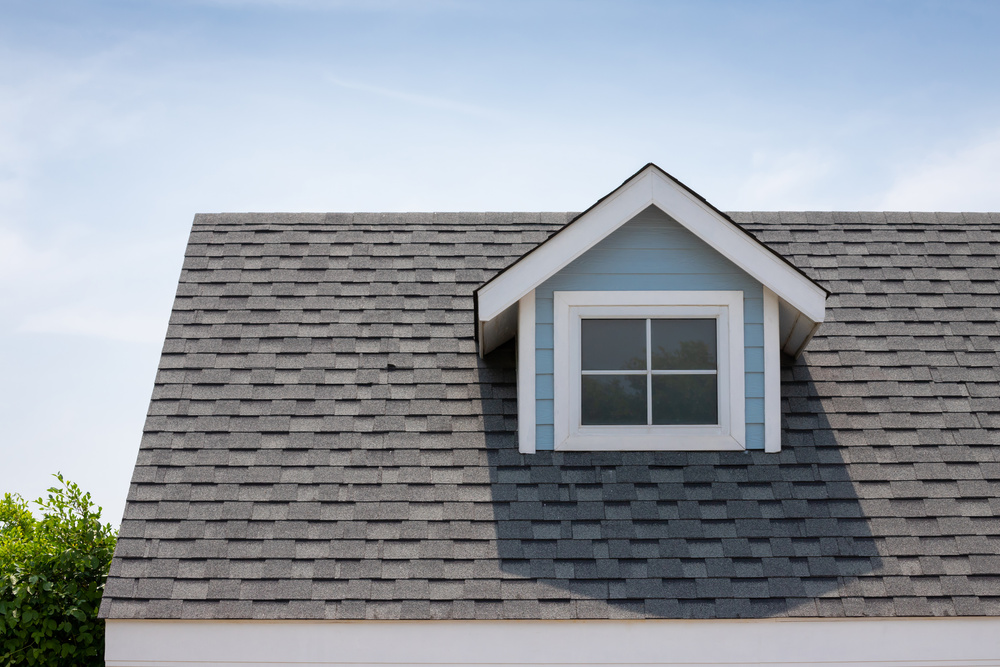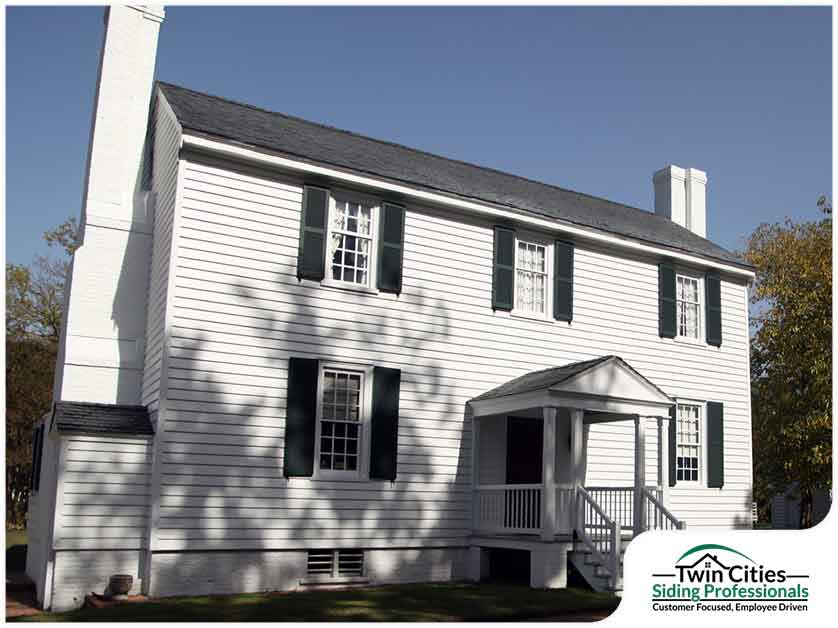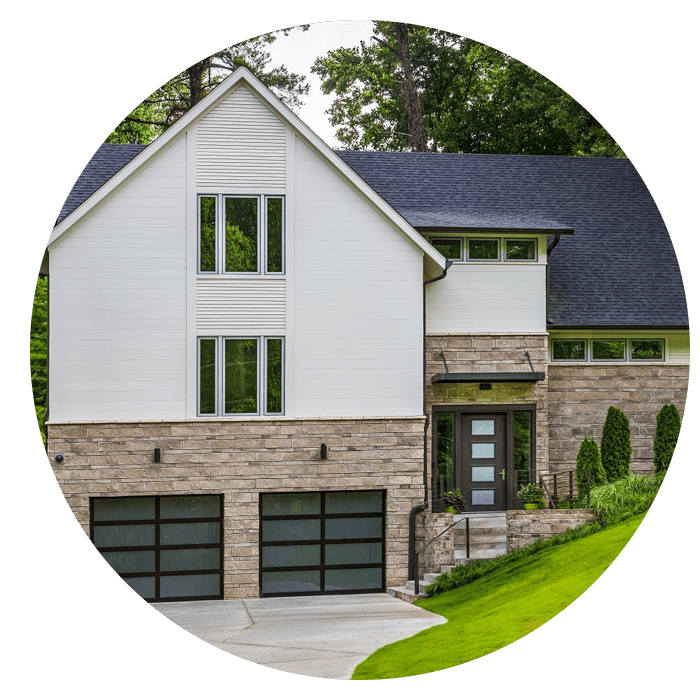While fiber cement and engineered wood get much of the spotlight, vinyl siding remains a practical, cost-effective choice for many St. Paul homeowners. With advances in insulation, colorfast finishes, and design versatility, modern vinyl siding offers reliable performance that suits a wide range of home styles and budgets. Vinyl siding can be customized to match your home’s style, enhancing its aesthetic appeal and significantly boosting your home’s curb appeal. As a popular exterior cladding for houses, it not only protects but also improves the visual attractiveness of your home’s exterior. Here are the top reasons to consider vinyl siding for your exterior upgrade.
Key Takeaways
- Vinyl siding is one of the most affordable and low-maintenance cladding options
- Today’s products offer better durability, insulation, and color choices
- Ideal for homeowners who want a quick, attractive exterior refresh in St. Paul
1. Budget-Friendly Exterior Upgrade
Vinyl siding is widely known as one of the most economical siding materials available. If you’re looking to enhance your home’s appearance without exceeding your budget, vinyl provides an attractive and practical solution. Homeowners can save money through lower material and installation costs, making vinyl siding a smart choice for those seeking affordability. Understanding vinyl siding costs per square foot allows you to budget effectively for your project and compare options. Choosing vinyl siding can cut costs compared to other siding materials, while its cost effectiveness is further highlighted by its durability and potential to lower long-term energy costs through improved insulation. It requires fewer labor hours to install, which helps reduce total project costs.
2. Minimal Maintenance Needs
One of vinyl’s greatest strengths is its low maintenance profile. Unlike wood, it never needs to be sanded, scraped, or repainted. A quick rinse with a garden hose is usually enough to keep it clean. For tougher stains, gentle cleaning solutions like vinegar can be used to remove marks without damaging the siding. For busy homeowners in St. Paul, especially during Minnesota’s harsh winters, this convenience is a major plus.
3. Wide Range of Colors and Textures
Today’s vinyl siding isn’t limited to a narrow color palette. Manufacturers now offer dozens of shades—including darker hues that resist fading—along with woodgrain textures, board-and-batten styles, and shake options. This flexibility makes it easier to match your home’s design or modernize an older exterior.
Vinyl siding options can significantly enhance your home’s appearance and are designed to blend seamlessly with existing siding, ensuring a cohesive look even when replacing or adding panels. Many vinyl siding products are crafted to replicate the look of traditional wood clapboard and cedar shakes, giving homeowners the design flexibility to achieve classic or contemporary styles without sacrificing durability or low maintenance.
4. Improved Insulation Options
Insulated vinyl siding is an energy efficient exterior siding option that comes with built-in foam backing to enhance your home’s energy efficiency. It helps reduce heat loss during the winter and prevents overheating in summer, lowering your utility bills and improving indoor comfort year-round. Improved insulation from this type of exterior siding can also help reduce your energy costs throughout the year.
5. Durable in All Seasons
Vinyl siding is engineered to withstand the expansion and contraction caused by Minnesota’s freeze-thaw cycles, as well as harsh weather and severe weather conditions, including high winds. It also resists moisture, rot, and pests, making it a durable option for the varied weather conditions St. Paul homes face throughout the year. Its moisture resistant and weather resistance properties help maintain the structural integrity of your home, ensuring long-term protection against the elements.
6. Fast Installation
Vinyl siding is lightweight and comes in interlocking panels, making it quicker to install than many other materials. The installation process involves careful attention to detail to ensure proper installation, as even the best vinyl siding will not perform well unless installed correctly. This can speed up the renovation process and reduce disruption for your household.
During installation, it is important to drive the nail head through the nailing slots, allowing the panels to expand and contract with temperature changes. This prevents warping or buckling and ensures a long-lasting, attractive finish.
7. Strong ROI for Resale
A fresh, well-installed vinyl siding system can greatly enhance your home’s curb appeal and resale potential. New vinyl siding can increase your home value by dramatically improving your home’s exterior, making it look modern, well-maintained, and more attractive to buyers.
If you’re preparing to sell your property in the St. Paul area, new siding is one of the top upgrades buyers notice. For maximum resale value, it’s important to choose high quality materials, such as CertainTeed or Mastic vinyl siding, which offer superior durability and long-lasting appeal.
How Vinyl Siding Compares to Other Materials
When selecting siding for your home, it’s important to weigh the pros and cons of the most popular materials: vinyl siding, wood siding, and fiber cement siding. Each offers distinct benefits and challenges that can impact your home’s appearance, performance, and long-term value.
Vinyl siding stands out for its affordability and ease of installation, making it a budget-friendly option for many homeowners. Unlike wood siding, which often requires regular painting, sealing, and protection against pests, vinyl is virtually maintenance free and resists moisture damage. This means you can enjoy a fresh-looking exterior without the frequent repairs or upkeep that wood demands.
Fiber cement siding, on the other hand, is known for its strength and resistance to fire and insects. While fiber cement offers a more traditional look and can mimic the appearance of wood, it is heavier and typically involves higher labor costs during installation. Additionally, fiber cement may require periodic repainting to maintain its appearance, unlike vinyl siding, which retains its color and finish for years.
When it comes to energy efficiency, insulated vinyl siding can help reduce heating and cooling costs, while wood and fiber cement siding may need additional insulation to achieve similar performance. Vinyl siding panels are also available in a wide range of styles and colors, giving you more flexibility to match your home’s design compared to some other materials.
Ultimately, choosing vinyl siding means opting for a practical, cost-effective, and low-maintenance solution that delivers lasting curb appeal and value for your home’s exterior. By understanding how vinyl compares to wood and fiber cement, you can select the best siding material to suit your needs and budget.
Explore Your Siding Options
Vinyl siding offers affordability, ease of care, and design flexibility—all qualities that matter to today’s homeowners. As a practical choice for home improvement projects, vinyl siding stands out for its durability, low maintenance, and cost-effectiveness, making it a popular option for those seeking to enhance their home’s exterior. The advantages of vinyl siding include its versatility, ease of partial replacement, and ability to be customized in appearance and color. However, not all vinyl siding is created equal; selecting the best vinyl siding made from high-quality polyvinyl chloride (PVC) ensures long-lasting results and better protection for your home. At Twin Cities Siding and Roofing, we help you choose the right siding system for your goals, climate, and budget.
Learn More About Our Siding Services
FAQs
Is vinyl siding a good choice for older homes in St. Paul? Yes. Vinyl can modernize the look of older homes while covering worn or outdated materials without extensive prep.
How long does vinyl siding last? High-quality vinyl siding can last 20 to 30 years or more with minimal upkeep.
Will vinyl siding work in extreme Minnesota weather? Today’s vinyl siding is designed to handle freeze-thaw cycles, moisture, and strong winds common in St. Paul.
Can vinyl siding be insulated? Yes. Insulated vinyl siding includes a foam backing that improves energy efficiency and impact resistance.
Is vinyl siding available in custom colors or textures? Most manufacturers offer a broad range of colors and textures, including options that mimic woodgrain or traditional lap siding.





